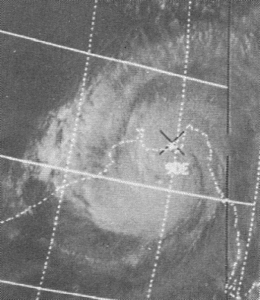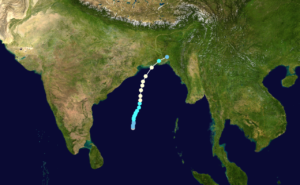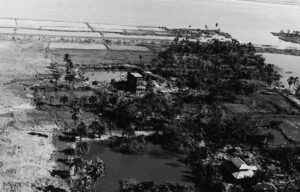 When weather gets ugly, and things end up in really bad shape, the blame often falls on the disaster crew trying to help. The 1970 Bhola cyclone, which was also referred to as the Great Cyclone of 1970, was a catastrophic tropical cyclone that hit East Pakistan (now Bangladesh) and West Bengal in India on November 12, 1970. It was also a prime example of the blame game. The 1970 Bhola Cyclone was the deadliest tropical cyclone on record and one of the most lethal natural disasters in history. The death toll from the storm was at least 300,000, with estimates reaching up to 500,000, largely due to the storm surge that inundated the low-lying islands of the Ganges Delta. Bhola was the most intense and the sixth cyclonic storm of the 1970 North Indian Ocean cyclone season.
When weather gets ugly, and things end up in really bad shape, the blame often falls on the disaster crew trying to help. The 1970 Bhola cyclone, which was also referred to as the Great Cyclone of 1970, was a catastrophic tropical cyclone that hit East Pakistan (now Bangladesh) and West Bengal in India on November 12, 1970. It was also a prime example of the blame game. The 1970 Bhola Cyclone was the deadliest tropical cyclone on record and one of the most lethal natural disasters in history. The death toll from the storm was at least 300,000, with estimates reaching up to 500,000, largely due to the storm surge that inundated the low-lying islands of the Ganges Delta. Bhola was the most intense and the sixth cyclonic storm of the 1970 North Indian Ocean cyclone season. 
A cyclone developed over the central Bay of Bengal on November 8th and moved northwards, gaining strength along the way. It peaked with winds of 115 mph on November 10 and struck the coast of East Pakistan the next afternoon. The resulting storm surge demolished numerous offshore islands, wiping out villages and decimating crops across the area. In Tazumuddin, the upazila (sub-district) hardest hit, the storm claimed the lives of more than 45% of its 167,000 residents. The death toll was just shocking.
 The Pakistani administration, under the leadership of General Yahya Khan, faced criticism for its slow response to relief efforts after the storm from both East Pakistani political figures and international media. Of course, the media doesn’t always understand the logistics concerned in such a rescue effort. This inadequate and biased response from the government of West Pakistan contributed to growing disenchantment among the people of East Pakistan, which enabled the opposition Awami League to secure a decisive victory in the provincial elections the following month and also led to the Bangladesh Liberation War seven months later. This was most likely a clear showing of weather making history.
The Pakistani administration, under the leadership of General Yahya Khan, faced criticism for its slow response to relief efforts after the storm from both East Pakistani political figures and international media. Of course, the media doesn’t always understand the logistics concerned in such a rescue effort. This inadequate and biased response from the government of West Pakistan contributed to growing disenchantment among the people of East Pakistan, which enabled the opposition Awami League to secure a decisive victory in the provincial elections the following month and also led to the Bangladesh Liberation War seven months later. This was most likely a clear showing of weather making history.


Leave a Reply